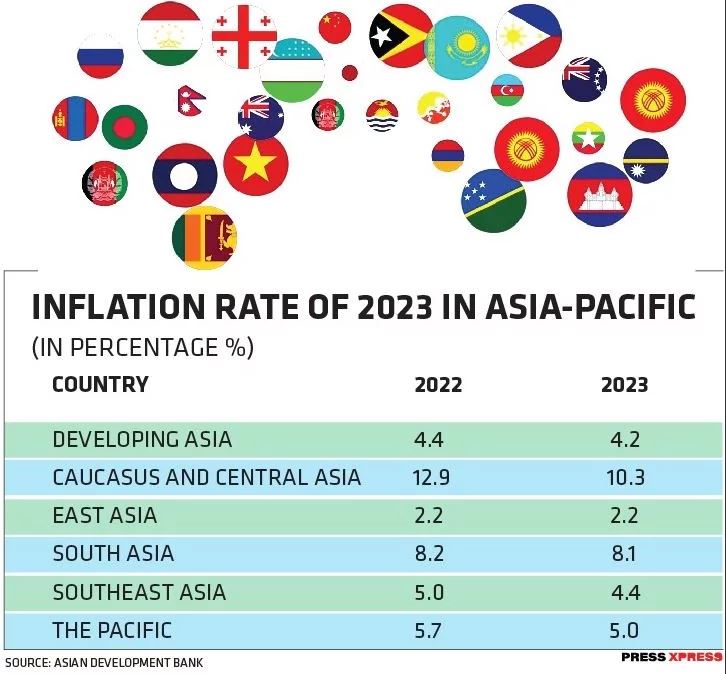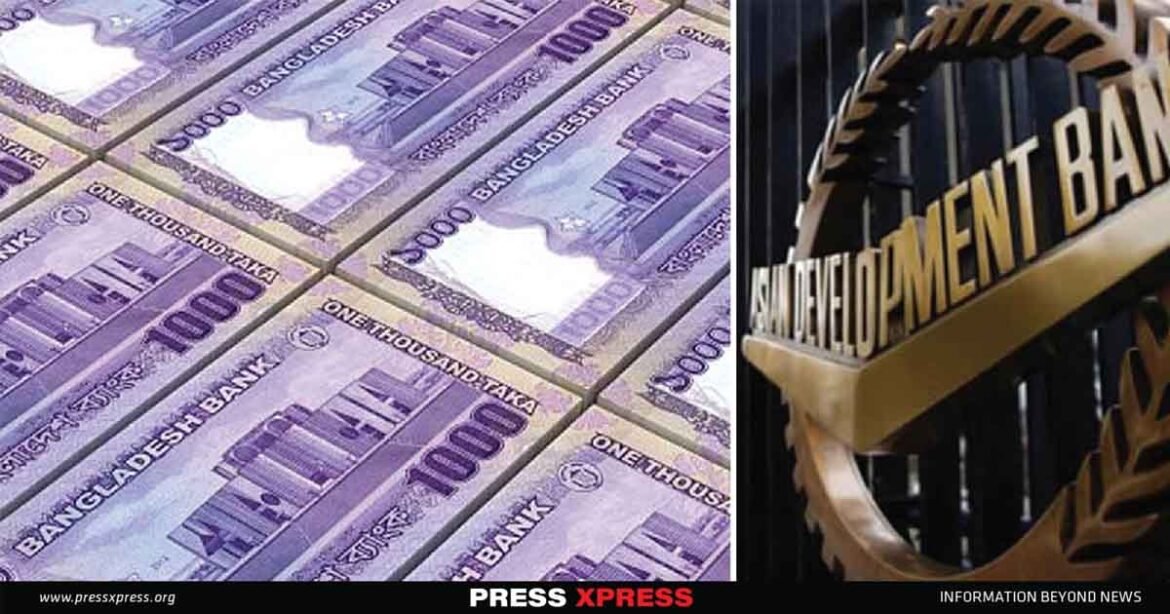The whammy of heavy inflation and uptight post-pandemic economic crisis is currently plunging Asia with a rising inflation of 4.2%. The effect of dual crisis bringing an estimated 155.2 million people in developing Asia down to the extreme poverty curve and bolstering the cost-of-living crises. These 155.2 million people are about 3.9% of the region’s population.
Asia Pacific plunged with heavy inflation under the threshold of a post-pandemic economy. On the 24th of August, 2023, the Asian Development Bank (ADB) published its report on the increased cost-of-living crisis alleviating poverty in Asia and the Pacific, stating that amidst all the post-pandemic economic crisis nearly 68 million people of Asia and Pacific countries are suffering from heavy inflation leading to extreme poverty.
ADB’s Report
The whammy of heavy inflation and uptight post-pandemic economic crisis is currently plunging Asia with a rising inflation of 4.2%. The effect of the dual crisis bringing an estimated 155.2 million people in developing Asia down to the extreme poverty curve and bolstering the cost-of-living crises. These 155.2 million people are about 3.9% of the region’s population. The repercussions of the pandemic on the Asian economy and cost-of-living crises due to the heavy inflation have pushed around 67.8 million people down to the poverty curve more than usual. ADB data also shows that the number of poor receiving government social assistance benefits increased the coverage of the total population of poor as a result of inflation.
You can also read: Inflation rates in Eurozone and US show signs of easing
Although disruptions caused by the COVID-19 pandemic have moderated, high and persistent inflation has emerged as one of the major challenges confronting policymakers in developing Asia. For instance, estimates suggest that surging food prices experienced due to the pandemic and other external factors pushed roughly 100 million more people into hunger around the world. This would put the estimated total of undernourished people at over one billion globally. Also, households with lower incomes experienced slightly faster inflation.

How Inflation Works
Inflation refers to the general increase in the prices of goods and services in an economy over a certain period of time, leading to a decrease in the purchasing power of money. In other words, as inflation occurs, each unit of currency buys fewer goods and services than it used to. Inflation is typically measured using an inflation rate, which is the percentage increase in the average price level of a basket of goods and services over a specified period, often a year. According to 2017 prices adjusted for inflation are defined as living on less than $2.15 (€1.98) a day.

This basket of goods and services represents a certain population’s typical consumption patterns and can include food, housing, transportation, and healthcare. Central banks and governments often aim to maintain stable inflation rates to promote economic stability. Moderate inflation can encourage spending and investment, as people might be less likely to hoard money if it’s losing value over time. However, high or hyperinflation can have detrimental effects on an economy, leading to uncertainty, reduced purchasing power, and distortions in economic decision-making.
Inflation in Asia and the Pacific Islands
In 2021, ADB estimated that the pandemic had pushed an additional 80 million people into extreme poverty as of the previous year when compared to pre-pandemic projections. In the report of 2023, the ADB warns that learning losses in Asia and the Pacific are likely to impact the financial walls of families as inflation outrageously struck the education sectors.
But undoubtedly the ratio has subsided comparatively from 2022. Albert Park, ADB’s Chief Economist stated, “While Asia and the Pacific Island states are steadily recovering, the dual crises is undermining progress toward eliminating poverty,”
“By strengthening social safety nets for the poor and fostering investment and innovation that creates opportunities for growth and employment, governments in the region can get back on track,”- Park added.

Inflation Scenario of Bangladesh
Though the recent price hustle of eggs due to a period of volatility is still in the frame, it could not surpass the fact that this year the poverty rate of Bangladesh has declined by 5.6% from the rising ratio of the past seven years (2016-2022) under the influences of numerous projects of Bangladesh Government. According to the Bangladesh Bureau of Statistics (BBS), the poor population in the country was 24.3% in 2016, which declined to 18.7% in 2022. The incumbent government has successfully reduced the country’s poverty rate by 50% in the last 10 years. However, the country has set an ambitious target to alleviate extreme poverty to 2.3% by 2031 and moderate poverty to below 3% by 2041.
Also, the month-on-month inflation in Bangladesh has maintained a higher trend in the current calendar year 2023 since the starting month of January. The point-to-point inflation in Bangladesh was recorded at 9.74% in June on a track of market volatility over six months.
Bangladesh’s consumer-price index (CPI) is still indomitably high, pushed by inflation. Global price fall of different commodities has hardly had an impact on the inflation in Bangladesh, as the latest statistics show the CPI hurtling down from astronomical highs in a few neighbors Sri Lanka in particular.
In conclusion, ADB identifies this inflation rate of 4.2% has pushed an estimated 155.2 million people into the extreme poverty bracket in developing Asia, accounting for about 3.9% of the region’s population.

The rising cost of living crisis, coupled with inflation, has disproportionately affected lower-income households and has led to an increase in the number of individuals requiring government social assistance benefits. While in Bangladesh, the recovery in inflation is in progress, the dual crises of inflation and the pandemic continue to challenge progress towards poverty alleviation. ADB urged to strengthen social safety nets and promote growth and employment opportunities to steer the region towards stability and prosperity among the Asian population, or 1.26 billion people, who will be considered economically vulnerable by 2030.


